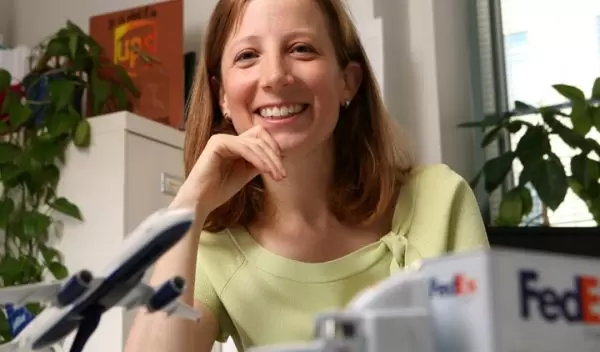
Libraries, Food Banks Benefit From Transportation Modeling
For industrial engineering professor Karen Smilowitz, the best part of her job is finding new ways to apply her specialty--transportation modeling--to problems that benefit society.
"Industrial engineering is not just taking a calculator and a stop watch, and hanging out in a factory," she says. "There's a lot more we can do to help society by applying our research."
Smilowitz, the Junior William A. Patterson Chair in Transportation at the McCormick School of Engineering and Applied Science at Northwestern University, conducts research in the optimization of freight movement in a given area. This includes how to reduce miles for trucking or how to get two companies to work together to pool their resources and lower costs.
Recently, she has been investigating the solution to problems in a new area: nonprofit organizations. The recipient of a Faculty Early Career Development (CAREER) award from the National Science Foundation (NSF), Smilowitz has worked with both a local suburban library system and a local food bank to determine the best way to distribute books and food. Besides not having the budget or knowledge base to optimally solve their humanitarian-related problems, these organizations have different needs than for-profit companies.
"When you have a nonprofit, the goals change," Smilowitz says. "You can't just take a commercial model and apply it, since maximizing profit and minimizing cost aren't necessarily the goals."
In the library system, up until recently, vans visited each library five days a week to pick up and drop off book requests. As the economy went down, demand for library books went up--yet the library's budget remained stagnant. That meant it was no longer feasible to provide the service every weekday; visit frequency would be determined by library volume, and many libraries could potentially see a significant decrease in visit frequency.
So Smilowitz and her graduate students, along with visiting scholar Michal Tzur from Tel Aviv University, set to work finding the best solution to the problem. But making a model to make a route efficient required more than considering distances: it also had to include service factors such as who the drivers would be, what time pick-up and delivery would occur, and how often a library would be visited.
What the researchers eventually found was that the library system actually could reduce travel costs by increasing library visit frequency above the demand-based minimums. That way, instead of only going to certain distant libraries every other day, the route was optimized so drivers would go to each library three days a week, and every library could have greater service.
"We found this counterintuitive result, where we can reduce transportation cost and increase service," she says. "This opportunity is unique to nonprofits. In a for-profit setting, if you don't pay for a level of service, you don't get it. But we uncovered this new variation of the vehicle routing problem, which is really exciting. There is also this interdependency in how often you go and what you pick up, since if you go less frequently, books will accumulate. So we had some interesting formulation issues trying to keep things linear."
Smilowitz, fellow Northwestern professor Seyed Iravani and their students are working with a local food bank in Chicago. The bank's food distribution system collects food from restaurants and grocery stores and distributes it to soup kitchens and homeless shelters. The organization wanted to know the best way to pair up donors and recipients, and how to best design delivery routes to serve people.
"If this were a for-profit company, and you wanted to minimize cost, instead of giving to five agencies, you would just give to the first couple on your route," Smilowitz says. "But that's not equitable or sustainable. The food bank needs these agencies to be sustainable so they can distribute food and give everyone their fair share of supplies."
This problem, called sequential allocation, has been studied for years in for-profit settings. But when the objective becomes different, the math gets messier.
"We looked at the properties that were performing well for small examples to see how these could converge on what we wanted to do," she says. "From there, we came up with different variations and analytical results. We want problems that we can solve. That's really where the art of operations research comes in: creating a model that will solve not only this problem but similar general problems as well, so other people can use it."
Smilowitz enjoys the challenge of taking well-known models and reformulating them for the nonprofit sector.
"It's great to work with organizations that need our help," she says. "It's a great example of finding something you're interested in and linking it to your research."
-- Emily Ayshford, Northwestern University e-ayshford@northwestern.edu
This Behind the Scenes article was provided to LiveScience in partnership with the National Science Foundation.


